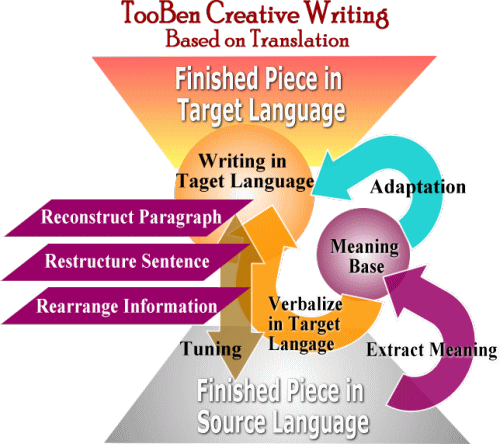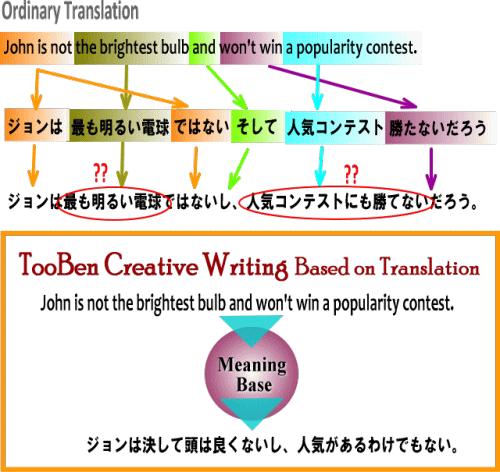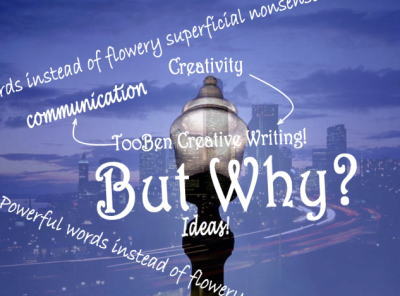What is TooBen Creative Writing Based on Translation?
 Definitions and Features Definitions and Features
TooBen Creative Writing Based on Translation is a method or technique to turn the source language piece into a finished writing work in the target language based on the translation.
-
A finished writing work: It refers to a decent, completed writing piece instead of a mere translation project, which can often lack the quality required for natural, smooth, and engaging reading due to differences between the two languages.
-
Based on translation: As the term “based on” indicates, translation in the TooBen Creative Writing technique is not the end but the means to support creative writing in the target language. More precisely, it’s part of the entire writing process and shouldn’t become a separated subprocess.
-
Inseparable translation process: It’s essential to prevent unnatural and incompatible factors of the source language from slipping into the target writing, which usually occurs when converting individual components to another language’s counterparts is taking place. Once those factors become embedded in the target language fabrics in the translation process, even elaborate post-translation editing and tweaking can’t eliminate them. Hence, a foreign product in a local disguise.
 Process of TooBen Writing Process of TooBen Writing
Let me show you the process of TooBen creative writing. It comprises the following three steps:
-
Read the source text and comprehend the meaning.
-
Start creative writing in the target language using the extracted and learned in Step 1 (meaning base).
-
Fine-tune the output in Step 2 by comparing it with the source.
Now, let's see what's happening during the process in detail. Please look at the illustration below:

The content obtained through reading and understanding the source will temporarily remain in the brain. I name it "Meaning Base," but you can imagine it something like "verbal goo" or "an idea or concept in a non-verbalized state." Since you can't retain a large chunk of information, the process goes by the unit of sentence or paragraph.
Once what you need to say takes shape, then express it in your own writing. At this point, forget about converting each component of the sentence to those of the target language. Instead, try to build sentences using your words, phrases, and expressions, just like when trying to verbalize what's inside your mind. While proceeding with your writing, you carefully adjust and control the output so that you could stay as close to the source as you can. You also try to adapt your expression to the market, culture, or whatever is necessary.
When the entire writing is complete, check again if your piece doesn't deviate from the source. Fine-tune the work to ensure smooth flows and effective diversities of sentence length, structure, rhythm, etc.
Let me remind you, again, of the difference from the ordinary translation process:

The upper section shows the goody translation process while the lower, TooBen writing process. Like jigsaw puzzle filling, the upper method can't remove the original blueprint or change the number of pieces and their shapes. Therefore, the result is an inevitable, cookie-cutter version of the original work. If the two languages share many similarities, then odd foreignness can be minimum. But what happens between very different languages? The answer is obvious.

Focusing on the core message than superficial verbal clutter.
|



